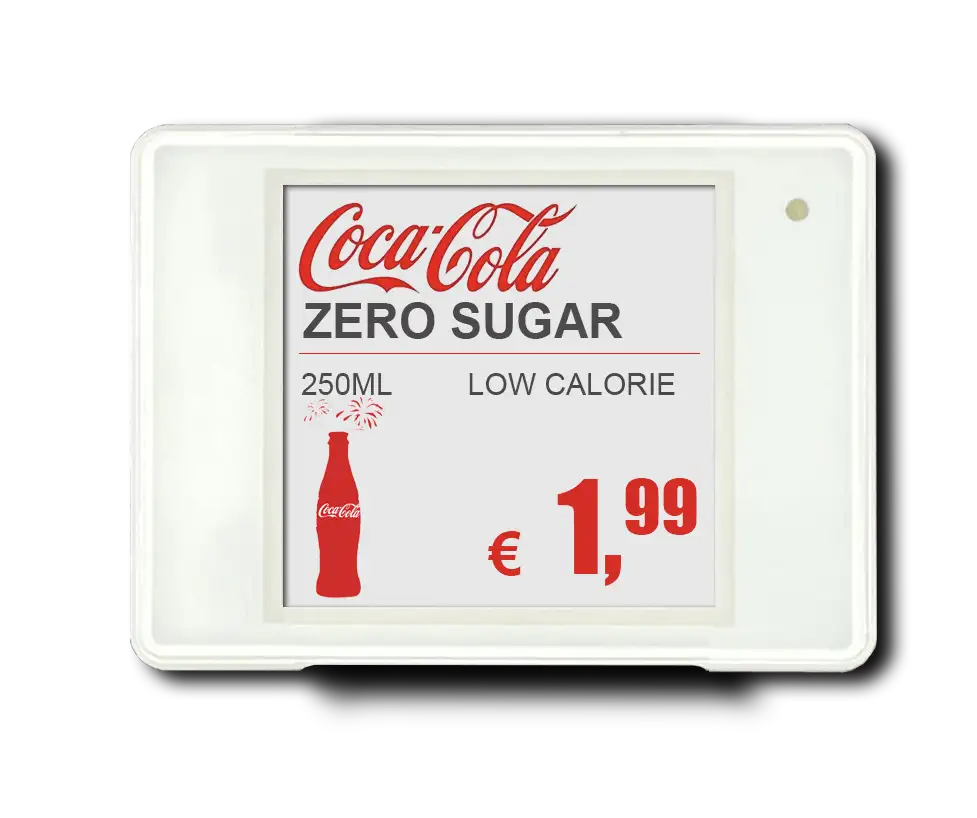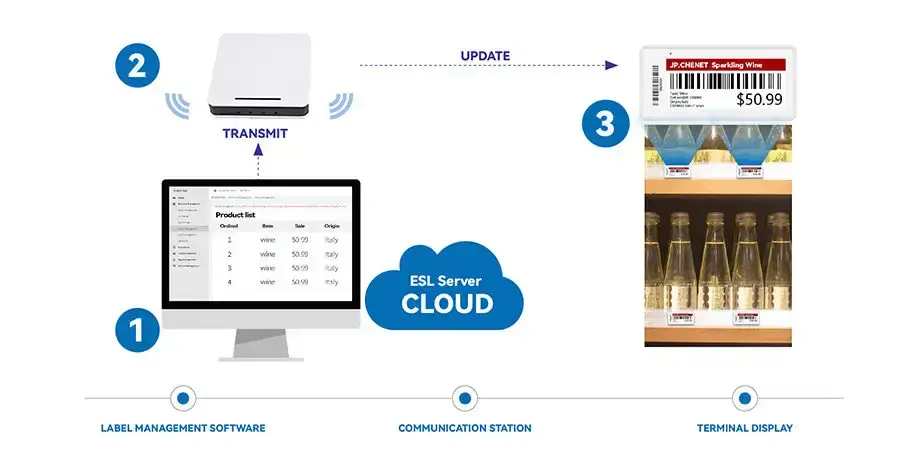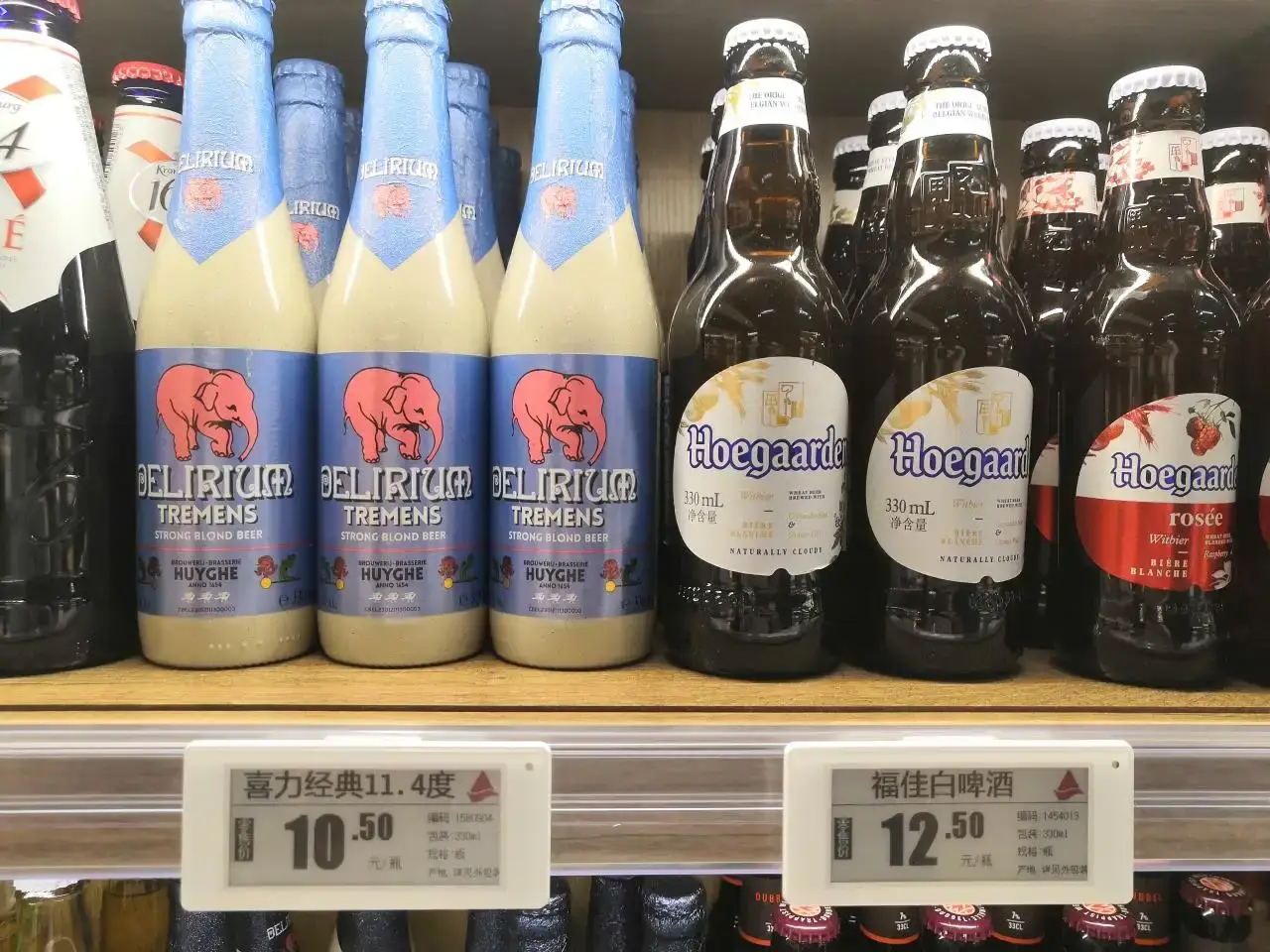Electronic price tag definition
An electronic price tag, also known as Electronic Shelf Label (ESL), is an electronic display device with the function of sending and receiving information. It is mainly used for electronic labels displaying price information in supermarkets, convenience stores, pharmacies, etc. The electronic display device on the shelf can replace the traditional paper price tag.
Each ESL is connected to the computer database of the mall through a wired or wireless network, and the latest commodity information is displayed on the screen on the electronic shelf tag. In fact, the ESL has successfully incorporated the shelf into the computer program, eliminating the situation of manually changing the price tag, and realizing the price consistency between the cash register and the shelf.
The electronic price tag has now basically become the standard configuration of the new retail industry. Many large supermarkets, new convenience stores, and unmanned convenience stores have applied ESL to replace traditional paper price tags. So, what is the “black technology” of the “unknown” electronic price tag?

“Write” the price tag with electronic ink
Generally speaking, the screen of supermarket electronic price tag is an ink screen. Therefore, we can call electronic ink electronic paper display technology (EPD).
In fact, the principle of an electronic ink screen is very simple. It consists of two substrates, on which there is much electronic ink. We can see E-ink as a very small capsule, filling with liquid charges. When a negative electric field is applied to both ends of the microcapsule, the white particles with positive charges will move to the negative electrode of the electric field under the action of the electric field, and at the same time, the particles with negative charges will move to the bottom of the microcapsule and hide. In this way, each pixel can be displayed in white or black. In this way, each pixel can display white or black.
We can think of this microcapsule as a big ball. There are dozens of small balls in the big ball. Fill the ball with paint instead of air. If we look at the big ball from the top, we can see that there are many white small balls floating inside, so the big ball looks white. Look at the big ball from the bottom, all you see is paint, so the big ball looks black. If we put thousands of big balls into a container and make the ball move between the top and bottom, we can see that the container is changing color. This is the basic principle of electronic ink.
What are the advantages of using electronic price tags?
More and more supermarkets begin to use electronic price tags. So, what are the advantages of using electronic price tags?
Firstly, the supermarket has a wide range of goods and numerous categories, and the updated frequency of commodity price tags is high. Especially when it comes to holidays, shopping malls will carry out promotions, and the frequency of price tag replacement will reach a peak. However, the replacement of traditional paper labels requires employees to print, cut, verify, and replace the labels, which not only wastes time but also consumes human and material resources. The use of ESL can greatly reduce the workload required by supermarkets to replace paper labels and reduce labor costs.
Also, the ESL can also keep the marked price of the goods on the shelf consistent with the actual price of the cashier. ESL can effectively improve the shopping experience of consumers.
Secondly, the ESL also has the advantages of low power consumption, good flexibility, environmental protection, low carbon, and timely update.
Finally, after using the electronic price tag, each product has its own unique ID. When we need to know the specific location of a product, we only need to see the location of the goods on the shelf by the ESL system. Using ESL can achieve accurate positioning and improve work efficiency.
How does the electronic price tag work?
A complete ESL system consists of four parts: a server system, wireless access point, price label, and intelligent handheld terminal equipment. First of all, obtain the commodity information from the customer database, and then use the electronic price tag application software installed in the server system for coding processing, and send the price information to be updated to the wireless access point through Ethernet (or serial communication port).
The wireless access point sends the radio signal containing the commodity data information to the corresponding electronic shelf label. The electronic shelf tag is a wireless data transceiver with an ID code, which can restore the received RF signal to an effective digital signal and display it. The ESL system has two communication functions: point-to-point and mass transmission. The server system can transmit data for a specified tag and can control all tags at once. Each ESL stores multiple pieces of information corresponding to the goods, and we can easily query and check with the help of intelligent handheld terminal equipment.
Place the ESL on a special PVC guide rail or in various structures, such as hanging, hooks, or tables. The electronic price tag system also supports remote control. The headquarters can price and manage the commodities of its chain divisions through the network. There are multiple pieces of information corresponding to the goods stored inside. The salesperson can easily query and check with the help of intelligent handheld terminal equipment.

For more services, please follow Zhaoxian’s FaceBook homepage for more informationZHAOXIAN CHINA
 Professional anti-theft &lable&tag provider
Professional anti-theft &lable&tag provider

